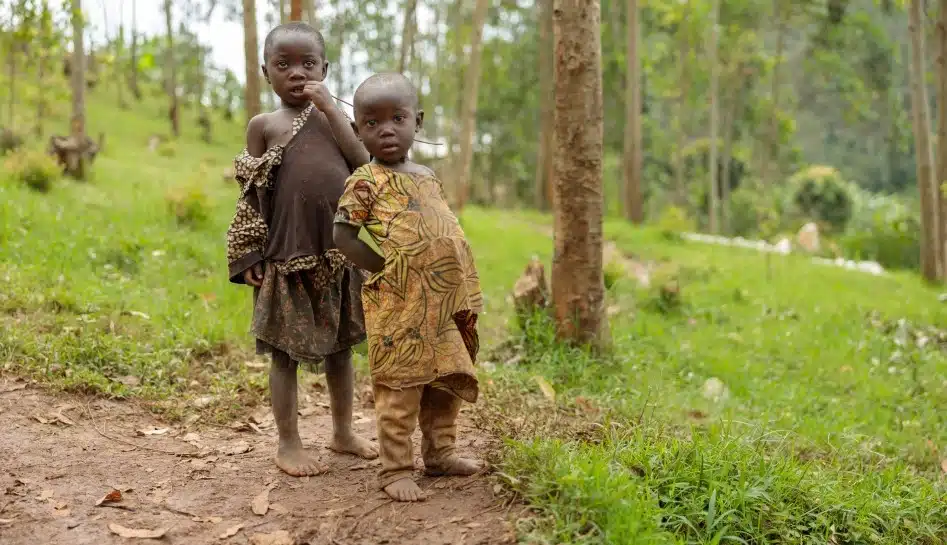UNICEF identifies eleven countries facing emergencies that need more attention and support in 2023
With crises, conflict and displacement, disease outbreaks taking over different countries, more children are in need of humanitarian assistance than at any other time since the Second World War, says the latest report by UNICEF.
UNICEF has identified eleven countries facing emergencies that need more attention and support in 2023.
South Sudan
South Sudan is going through the worst humanitarian crisis since its independence in 2011, and children are affected most deeply. In 2022, conflict, persistent and unprecedented flooding, disease outbreaks and food and nutrition insecurity continued to compound the complex, chronic needs of the most vulnerable, especially children, leaving 8.9 million people, including 4.7 million children, 2.1 million women and 1.3 million people with disabilities in need of assistance.
In its latest Humanitarian Action for Children appeals for South Sudan, UNICEF says it requires US$217.2 million for nutrition, health, WASH, education and protection interventions to meet children’s urgent needs in 2023.
Yemen
In its eighth year of conflict, Yemen’s deteriorating economy and collapsing basic services continue to be the main drivers of people’s needs in all sectors. More than 23.4 million people (including 12.9 million children) need humanitarian assistance and protection. UNICEF says it requires US$484.4 million to respond to the unfolding crisis in Yemen in 2023. Lack of predictable funding for urgent interventions challenges the continuity of key services, putting children’s lives and well-being at risk.
Haiti
In 2023, UNICEF estimates that more than 4 million children will need humanitarian assistance in Haiti. The UN agency is seeking US$210.3 million to meet the humanitarian needs of Haitian children and their families in 2023.
The Democratic Republic of the Congo
The Democratic Republic of the Congo is facing one of the world’s most complex and protracted crises. More than 15 million children bear the brunt of an escalation in armed conflict and recurrent disease outbreaks.
UNICEF says it requires US$862.4 million to address the acute needs of children in the country in 2023.
Pakistan
Due to the devastating climate-induced flooding, a protracted nutrition emergency and other recurrent health and food crises, women and children in Pakistan require urgent assistance. Around 33 million people have been affected, of whom 20.6 million (including 9.6 million children) need humanitarian assistance.
UNICEF says its requirements are US$173.5 million for 2023 to provide life-saving responses to the most vulnerable people affected by floods, including children.
Burkina Faso
Burkina Faso is the epicentre of a multidimensional humanitarian crisis affecting the Sahel region, driven by a combination of factors including armed violence, insecurity spreading to coastal countries; demographic pressures; climate change; and health crises. Insecurity continues to increase, resulting in the internal displacement of more than 1.7 million people and disrupting access to essential social services.
An estimated 5.5 million people require humanitarian assistance in the country, including 3.2 million children, 179,252 of whom are suffering from severe wasting.
Deepening civil conflict in Myanmar continues to impact children and their families, with some 5.6 million children in need of humanitarian assistance. The conflict has undermined the delivery of child health services, including routine immunization, threatening to take a long-lasting toll on children’s health and well-being.
Palestine
In the Gaza Strip and the West Bank, including East Jerusalem, around 2.1 million people need humanitarian assistance, among them 1.1 million children.
UNICEF says in August 2022, the Gaza Strip experienced a new escalation of hostilities, leaving thousands of children traumatized and in need of support. The situation in the West Bank, including East Jerusalem, remains tense, and humanitarian needs are increasing.
UNICEF says it requires US$20.3 million to respond to the humanitarian situation in Palestine.
Bangladesh
Five years into the Rohingya crisis, Bangladesh hosts 943,529 Rohingya refugees in Cox’s Bazar District, including 490,635 children. The refugees rely heavily on international aid and humanitarian assistance.
UNICEF is appealing for US$173.8 million to provide child-focused and gender-sensitive humanitarian assistance in the areas of water, sanitation and hygiene (WASH), health, nutrition, child protection and education for refugees, host communities and the most vulnerable people in flood- and cyclone-affected districts.
Syria
Children throughout the Syrian Arab Republic face one of the world’s most complex emergencies. More than 14.6 million people (6.5 million children) require assistance, and 6.9 million people (3 million children) are internally displaced.
A full two thirds of the population requires assistance due to a worsening economic crisis, localized hostilities, mass displacement and devastated public infrastructure.
UNICEF requires US$328.5 million to meet the needs of children in the Syrian Arab Republic in 2023.
Kenya
UNICEF says that with the failure of the last four rainy seasons, Kenya is experiencing the worst drought in 40 years. It is projected that about 4.5 million people in the 23 arid and semi-arid lands will require humanitarian assistance, more than double the number of people who require assistance just over a year ago.
Read More: https://h-leads.com/ending-zero-covid-policy-was-like-flipping-a-pancake/


















Add Comment